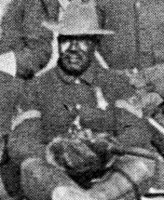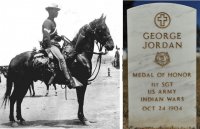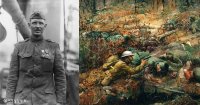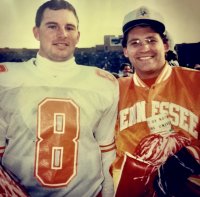OneManGang
Senior Member
- Joined
- Sep 7, 2004
- Messages
- 2,077
- Likes
- 9,958
Tennessee vs The Maxims vs Notre Dame (1991)
DATE: 9 November 1991
PLACE: Notre Dame Stadium
ATTENDANCE: sellout
FINAL SCORE: Tennessee 35 Notre Dame 34
a/n: The one game most mentioned by readers of these looks back at Vol history is this one. You asked for it, you got it.
The Vols entered the 1991 season with high hopes. They were the two-time defending SEC champions and were trying for a “hat trick.” Unfortunately, back-to-back losses to Florida and Alabama put those notions out the window. It's at this point that teams have to play for pride.
And pride still mattered.
Notre Dame was having a very good season, the only blot on their record being a loss to Michigan in Ann Arbor in week 2.
The rosters for the two teams were stocked with future NFL talent such as Todd Kelly for the Vols and Jerome Bettis of the Irish, just to name two.
Both coaches, John Majors of Tennessee and Lou Holz of the Irish, sported National Championship rings. Majors' was from his time at Pitt where they won the title for the 1976 season on the legs of one Tony Dorsett and Holz with the Irish in 1988.
It was 37º and sunny at kickoff and while the crowd at The House That Rockne Built was overwhelmingly clad in blue and gold, the Orange and White faithful were present in some numbers and made their presence felt.
NBC Sports was broadcasting the game but most Vol fans watching at home couldn't tell you who the network commentators were as they muted the TV and turned up John Ward and Bill Anderson.
Tennessee won the toss and elected to defer. In retrospect …
The Vol defense held the Irish to a four-and-out on their own 26. The Domers lined up to punt and the punt landed in front of Vol Dale Carter who tried to field it. The ball had other ideas and bounced off him and was recovered by Notre Dame on the Tennessee 46.
The Irish kept the ball on the ground until on 2nd and goal from the Tennessee 12, Irish running back Tony Brooks gained 12 of his eventual 126 net yards on the day dragging Vol defenders with him into the end zone.
Then it got bad.
Dale Carter got a nifty 62-yard return on the kickoff and Tennessee was in business on the Irish 31. Vol quarterback Andy Kelly drew a bead on Carl Pickens. However, Pick slipped and fell and Irish defender Tom Carter stepped in front and intercepted the ball on the Irish 21. He then set sail for 79 yards down the Notre Dame sideline.
Then it got even worse.
Again Dale Carter had a nice return and the Vols managed to generate a bit of offense but were foiled by a penalty and forced to punt. Notre Dame started out on their own six but quarterback Rick Mirer engineered an 11-play 94-yard drive that he personally capped off with a 10-yard scamper running over Dale Carter at the goal line.
End of 1st Quarter
Score: Tennessee 0 Notre Dame 21
Tennessee had the ball to open the 2nd quarter and were driving. They continued to drive until Andy Kelly found a streaking Corey Fleming in the back of the end zone capping a 65-yard drive.
The Irish answered with a drive that ended with a 24-yard field goal by Craig Hentrich.
The Vols then got a bit of offense going but that ended when Kelly completed a pass to Fleming at the Irish 30. Fleming was hit and coughed up the ball which was then returned to the ND 41.
The Irish drove again and were rewarded when Bettis blasted in from the 2.
The Vols made it to the their own 45 when Little Man Stewart was stuffed on 4th and 1.
The Irish took over on the Vol 42 with 1:04 left in the half. They made it to the UT 15 when Hentrich lined up for a 32-yard attempt.
It was at this point that another name was added to the Book of Vol Heroes.
Darryl Hardy blasted through and blocked the kick. A scrum of Irish and Vols formed trying to get to the ball when a lone figure in white and orange wearing number 22 emerged with the ball.
Take from here, John: “Floyd Miley can fly! Floyd Miley has the ball at the fifteen! At the ten! At the five! He has gone ALL! THE! WAY! TOUCHDOWN! BIG ORANGE!”
It is nearly impossible to overstate the importance of that play. If Hentrich hits the field goal, the Irish are up by 27 at half and the Vols have a nearly impossible hill to climb. Even if he misses or if the block is simply recovered the Vols are still down 24. That return changed everything. Tennessee was still in the hole but maybe, just maybe …
Also Hentrich was injured on the play but stayed on.
End of 2nd Quarter
Score: Tennessee 14 Notre Dame 31Tennessee vs The Maxims vs Notre Dame (1991)
Both bands, steeped in tradition, put on outstanding shows at half time.
The 3rd canto opened with an exchange of punts.
The Vols set up shop on the Tennessee 29.
Kelly and running back Aaron Hayden combined to take the Vols down to a 1st and goal on the Irish 4. Kelly rolled out and found tight end Von Reeves in the end zone to cut the deficit to 10.
The Irish then drove down into scoring position but the UT defense stiffened and a timely procedure call stymied the Irish on the Tennessee 3. Hentrich came in and nailed a 20-yarder which would prove to be Notre Dame's only points in the second half. Kicker Hentrich was re-injured on the ensuing kickoff and sat out the rest of the game.
The Vols fumbled on their next drive and ND took over on their own 31 to end the quarter.
End of 3rd Quarter
Score: Tennessee 21 Notre Dame 34
Neither side did much and ended the first three series with punts. That second ND punt was from deep in their territory and it was downed at the Irish 45.
There was 9:40 left on the clock.
Kelly passed the Vols down to a 1st and goal on the ND 4. Aaron Hayden took the pitch and shot into the end zone. The Vols were now down 6. The drive took an elapsed 37 seconds.
There was still 9:03 on the clock.
Three incompletions by Rick Mirer gave Tennessee the ball back with 8:40 left on the Irish 47.
The drive came down to a 4th-and-nine play from the Irish 25. Eschewing a field goal, Majors went for the throat. Kelly faded back and, evading the Irish pass rush, shot a pass to Carl Pickens on the goal line. Pickens and Irish safety Jeff Burris went up for the ball which dropped incomplete. 6:40 left.
Rick Mirer then threw the ball directly to Dale Carter at the Irish 45 on a 3rd-and-12 play. Tennessee's ball with 5:09 left.
On 2nd and three from the ND 26, Kelly threw a perfectly timed screen pass to Aaron Hayden who shot into the end zone. The Vols had come all the way back and now led by 1.
After the kickoff, the Irish were in business on their own 25 with 3:57 on the clock. Tennessee had burned all their time outs. Waayyy too much time.
The Irish went back to the run game and methodically made their way down field. Mirer ran a quarterback draw for eight on 3rd-and-11 from the Vol 17. ND called time out with four seconds left.
ND sophomore Rob Leonard, who had never even attempted a kick in a real game, lined up for a 27-yard chip shot from the right hash.
John Ward had been complaining all game that his view was restricted from their booth particularly toward the end zones.
What happened?
Tell us, John - “The kick is up … and it is … good! … NO! IT IS NO GOOD! IT! IS! NO! GOOD! TENNESSEE BEATS NOTRE DAME 35 TO 34!!!
Somehow, just enough of Jeremy Lincoln's butt stuck up as he flashed in front of the kick to knock it off course.
This day is now a part of Vol Legend as “The Miracle at South Bend.”
Final Score:
Tennessee 35 Notre Dame 34
********
For most people in Middle Tennessee, the end of the Civil War didn't change very much. The Confederate Army had been banished nearly six months before and had been missing for the previous two years anyway. Business was being conducted. The dollar replaced the worthless Confederate scrip and people began to rebuild their lives. The fact that many of the ante-bellum mansions in the Nashville area still stood (and do to this day) was mute testimony to the swift surrender in 1862 and the fact that the Yankees, therefore, had no reason to put them to the torch.
There was the matter of the new state government installed on the tips of Yankee bayonets But already moves were underway for Tennessee to re-affirm its fealty to the Constitution and seek an early end to what was quaintly referred to as “Reconstruction.”
Also, though, there were tens of thousands of freed slaves looking for employment, seeking some farmland, or trying to find a way to Somewhere Else. The cards were stacked against them, though as most were illiterate and knew nothing beyond menial labor. This situation was particularly hard on young men who quickly found their families reduced to sharecropping or begging.
One such young man was George Jordan. He had been born into slavery on a plantation in Williamson County in 1847. Seeing that his economic condition had little chance of improving, he went to Nashville in 1866, made his mark on enlistment papers, swore his oath, and joined the U.S. Army.
On 28 July 1866, the Congress authorized a reorganization of the Army. Included in that authorization was the creation of six regiments, four infantry (the 38th, 39th, 40th and 41st) and two cavalry (the 9th and 10th) designated “Colored,” to be made up of African-American soldiers with white officers. The Congress recognized that most, if not all, of the enlisted ranks would be illiterate and, for the first time in Army history, created the post of Regimental Chaplain for each of the regiments. These officers would not only be responsible for the spiritual well-being of the men, they would also be teachers conducting reading and writing classes.
George found himself posted to the 38th Infantry. The 38th was raised at Jefferson Barracks, Missouri, and assigned to duty in the New Mexico Territory and patrolling along the trans-continental railroad which was then under construction. George took advantage of the educational opportunities and learned to read and write. This made him eligible for promotion.
In 1869, the Congress again ordered a reorganization of the Army. The total number of regiments was reduced from forty-five to twenty-five. The four “Colored” infantry regiments would be consolidated into the 24th and 25th Regiments still with the “Colored” designation. The two cavalry regiments were untouched.
Early the next year, George went to the Troop “K” of the 9th Cavalry. Cavalry units do not have “companies.” The equivalent organization is the “troop,” with battalions being “squadrons.” (a/n: I should have caught this last month when dealing with Sgt. Carroll, but didn't. The Yankee War Dept., though, used the two terms interchangeably.) Whether he asked for transfer or was sent there is unclear. He would spend the next 26 years with that unit until his retirement.
The Regiment was assigned to patrol west and southwest Texas, fighting skirmishes and ambushes by hostiles and adjudicating disputes among the Anglo settlers.
George was soon promoted to Sergeant. Reading and writing was a job requirement and may possibly have been behind his transfer to the Cavalry. His experience and leadership abilities led to him often being assigned a platoon or more of troopers for an independent patrol of scouting mission.
On 13 May 1880, Sgt. Jordan was leading a patrol of 25 dismounted troopers in New Mwxico with orders to escort supplies and proceed to the settlement at Tularosa which was the site of an old fort. His little command was about halfway there when he received word that a force of some 100 Apache warriors under a Chief named Victorio was heading toward the town looking to rape and murder. The Apaches had already raided several isolated homes along the way, butchering everyone they encountered.
Jordan asked his men if they were up to a hard march to get to Tularosa. Every single trooper answered with a resounding “Yes!” They reached Tularosa on the morning of 14 May. But there were no Apache to be seen. The troopers immediately set to work building a stockade around the town and also a secure corral for the cattle.
Sgt. Jordan Later wrote, "on the evening of the 14th, while I was standing outside the fort conversing with one of the citizens, the Indians came upon us unexpectedly and attacked."
The townsmen joined the troopers manning the stockade. For his part, Victorio kept shifting the point of his attack trying to find a weakness or catch the troopers bu surprise. Jordan detached some of his men into a “flying column” sending them to the threatened spots. At one point, the Apaches moved toward the corral. Jordan sent ten men to intercept them and they ended the threat. The Apache finally withdrew leaving behind several dead and wounded.
The next morning, the balance of the Regiment arrived and set off after Victorio's forces but never caught up with them. Victorio retreated to Mexico where he was killed in fight with Mexican soldiers.
The next year, on 12 August 1881, a detachment of 19 men under Capt. Charles Parker was ambushed at Carrizo Canyon, NM, by what was left of Victorio's warriors now led by a Chief named Nana. It was a short, sharp fight with Sgt. Jordan commanding the right wing of the troopers' line. Two cavalrymen and six horses died in the fight. But the Apaches were driven off.
Word of Jordan's exploits slowly made their way through the War Department. Finally, on 7 May 1890, now 1st Sergeant George Jordan received the Medal of Honor. He also received a Certificate of Merit for the Carrizo Canyon fight which brought an extra $2 per month pay.
1st Sgt, Jordan retired from the Army in 1896. He settled in Crawford, Nebraska, where other Buffalo Soldiers had settled, bought some land and was moderately prosperous. In the Autumn of 1904, 1st Sgt. Jordan took ill and sought treatment at the base hospital in nearby Fort Richardson. His status as Top Soldier and his Medal of Honor notwithstanding, he was denied admittance on the base of his race and was referred to the Soldiers' Home in Washington, DC. He was far too ill to make the trip and rode off on his final patrol on 24 October 1904. The Post Chaplain complained bitterly in a letter to his superiors that 1st Sgt. Jordan, “died for the want of proper attention.”
The soldiers of Fort Robinson, though, buried him with full military honors in the cemetery there.
His remains were moved to the Fort McPherson National Cemetery in 1947 and he sleeps there to this day.
In 2018, Williamson County Schools dedicated a new school in Brentwood. Jordan Elementary is named for the first, and to date only, African-American from the State of Tennessee to earn a Medal of Honor.
At the end of the 1949 John Ford classic “She Wore a Yellow Ribbon,” the narrator closes with this description of the U.S. Cavalry on the frontier, “So here they are: the dog-faced soldiers, the regulars, the fifty-cents-a-day professionals... riding the outposts of a nation. From Fort Reno to Fort Apache - from Sheridan to Starke - they were all the same: men in dirty-shirt blue and only a cold page in the history books to mark their passing. But wherever they rode - and whatever they fought for - that place became the United States.”
I can think of no finer tribute to Sgt. Jordan and his comrades.
********
So, how did the Vols do against The Maxims?
1. The team that makes the fewest mistakes will win.
Notre Dame's most obvious error was in not getting their back up place kicker any meaningful real game experience. Also, in the 2nd half the Irish largely abandoned their power running game which had been giving the Vols fits and began throwing the ball all over the yard.
2. Play for and make the breaks. When one comes your way … SCORE!
Floyd Miley.
3. If at first the game – or the breaks – go against you, don't let up … PUT ON MORE STEAM!
If any one game illustrates this Maxim, it is this one. Yes, the Vols were lucky, but they had to work damned hard to be that lucky!
4. Protect our kickers, our quarterback, our lead and our ballgame.
Like that 4th quarter field goal attempt by Alabama in 2022, you will have to argue long and hard to convince me that the Genrul hissownself didn't guide Lincoln's posterior to thwart that last gasp field goal attempt sending it down the hashmark and away from the uprights. Maybe he and Rockne flipped a coin?
5. Ball! Oskie! Cover, block, cut and slice, pursue and gang tackle … THIS IS THE WINNING EDGE.
The Vol defense harried Rick Mirer and his receivers throughout the second half and kept Tennessee in the game.
6. Press the kicking game. Here is where the breaks are made.
Darryl Hardy, Floyd Miley and Jeremy Lincoln.
7. Carry the fight to Notre Dame and keep it there for sixty minutes,
More like the last 45 minutes of game time, but you get the picture.
Tennessee would round out the 1991 campaign defeating Ole Miss, Kentucky and Vanderbilt but got blown out by Penn State in the Fiesta Bowl 42-17, finishing with a 9-3 record. They were ranked 14th (AP) and15th (Coaches).
Notre Dame lost their next game to Penn State but ended with a 10-3 record beating Florida in the Sugar Bowl 39-28 and ranked 13th (AP) and 12th (Coaches).
Majors was excused from the HeadVol job the next year.
Lou Holz resigned as HeadDomer after the 1996 season under a cloud of NCAA investigations with the heading “Lack of Institutional Control.” None of the charges related to his personal conduct but stung nonetheless.
Notre Dame honors its heroes even if they are somewhat tarnished. In 2008 a statue of Lou Holz was dedicated at Notre Dame Stadium.
What say you, Tennessee?
As John Ward (who deserves one as well!) would say, “It's time.”
Suggested Reading:
Lt. Grote Hutcheson, Ninth Regiment of Cavalry (starts page 280) The Army of the US Historical Sketches of Staff and Line with Portraits of Generals-in-Chief,1896 (find it at Ninth Regiment of Cavalry - The Army of the US Historical Sketches of Staff and Line with Portraits of Generals-in-Chief | U.S. Army Center of Military History)
Mikkelsen Jr., E.: (2007, January 18). Battle of Tularosa (May 14, 1880). BlackPast.org. Battle of Tularosa (May 14, 1880) •
Robert M. Utley, Frontier Regulars: The United States Army and the Indian, 1866-1890
dan
The only verified picture of George Jordan (detail from a larger regimental picture) (US Army)

From WilliamsonSource: *dot* com

Last edited:





